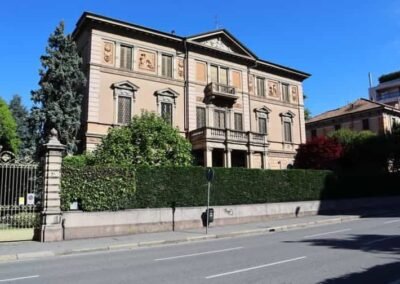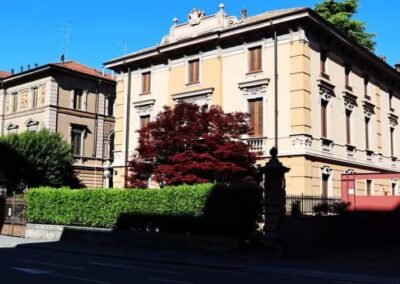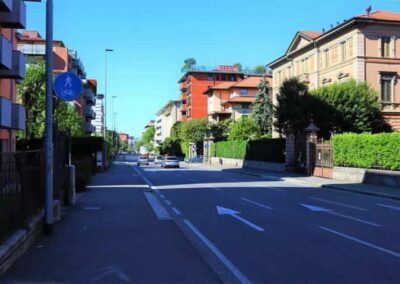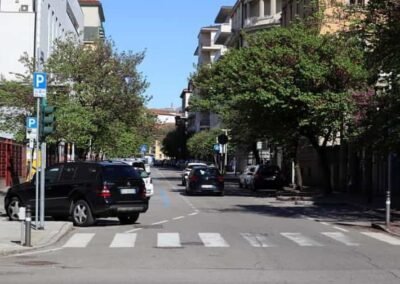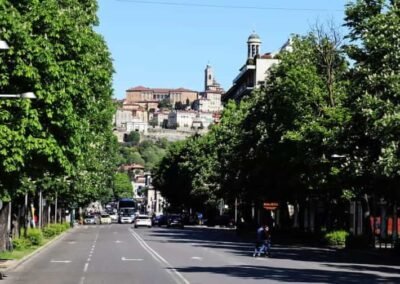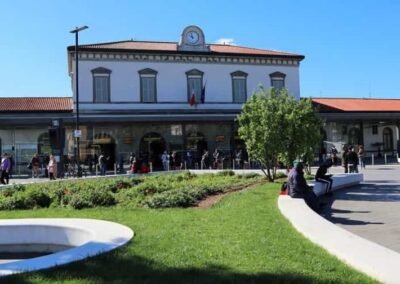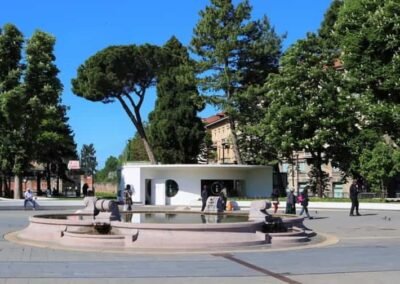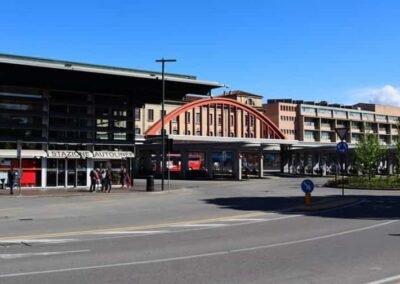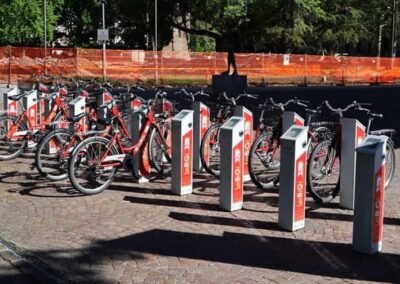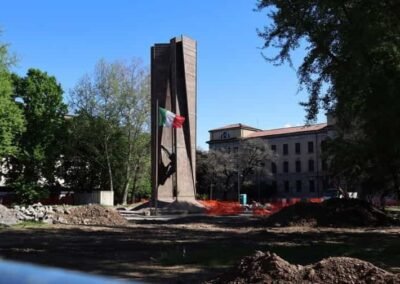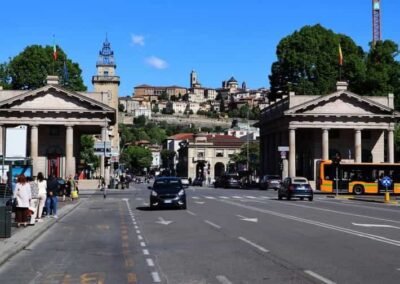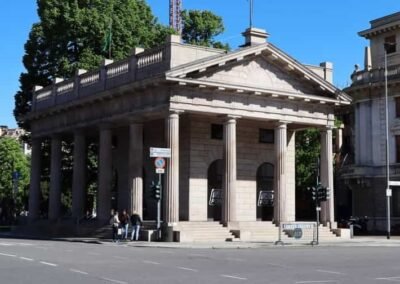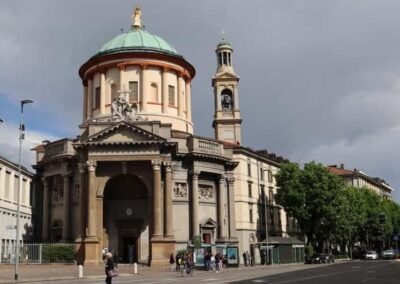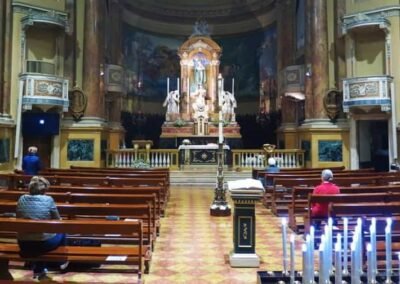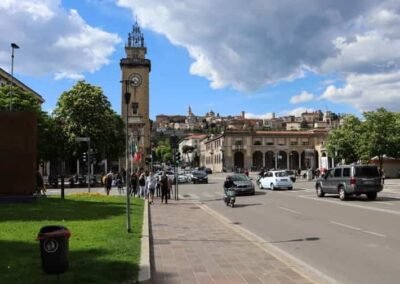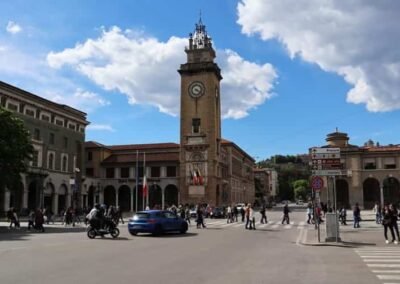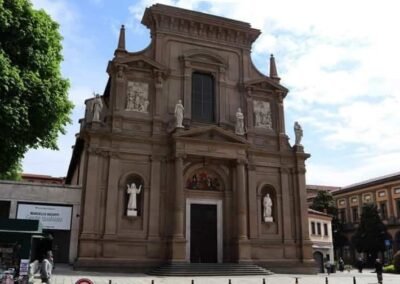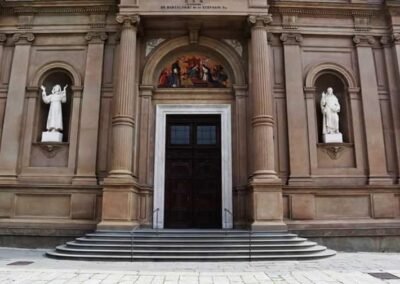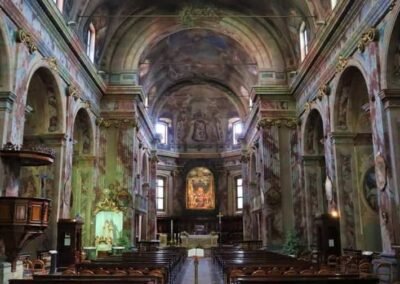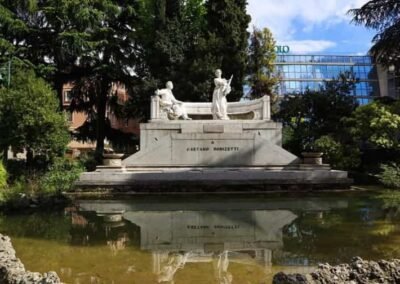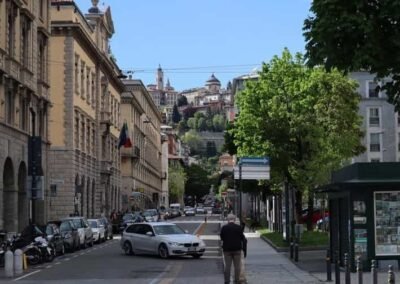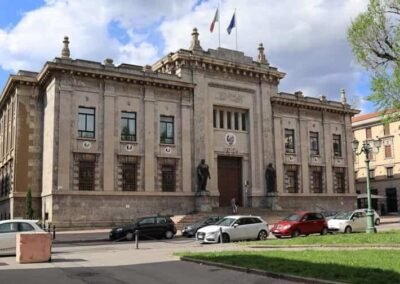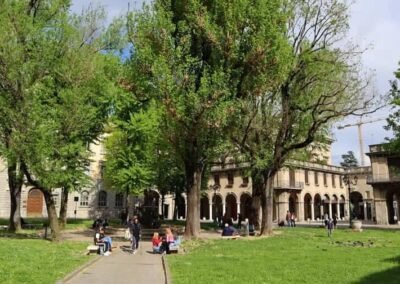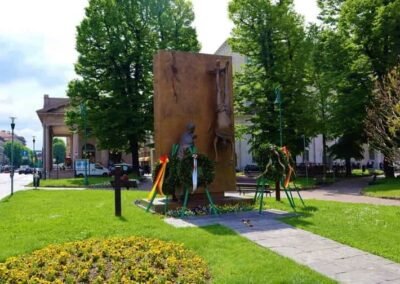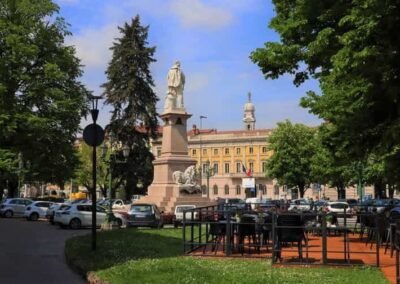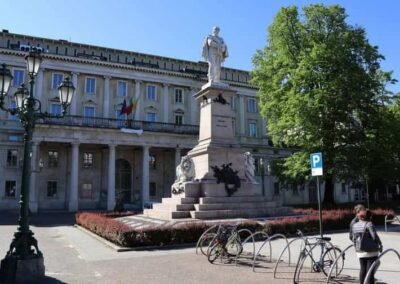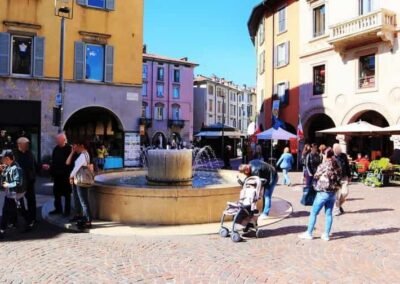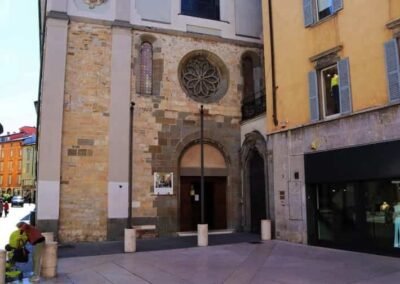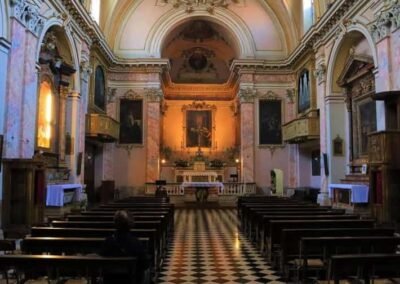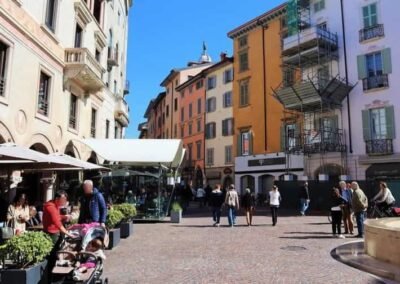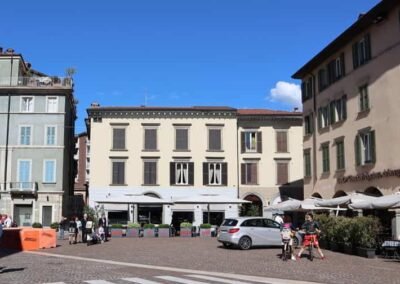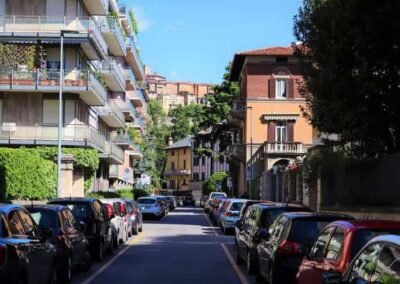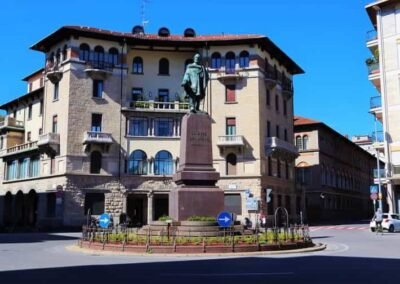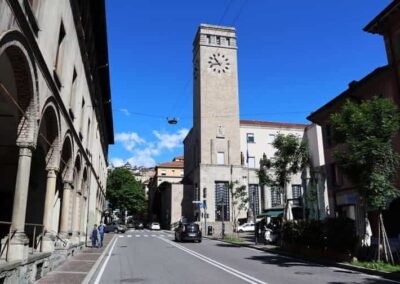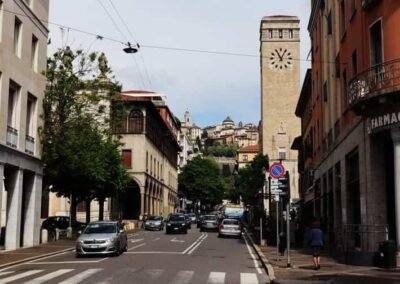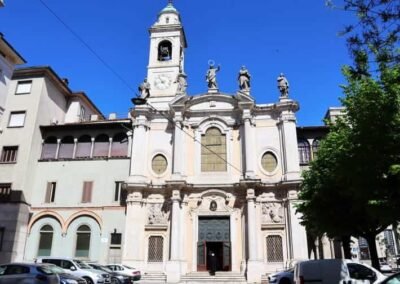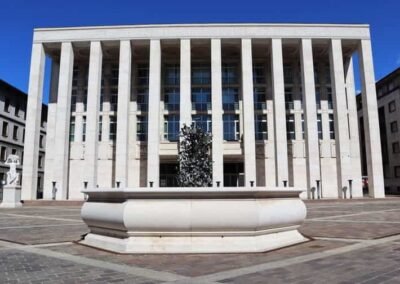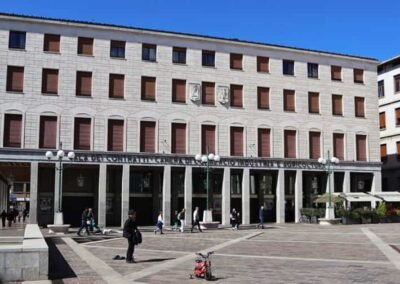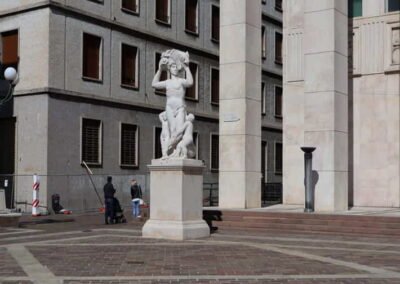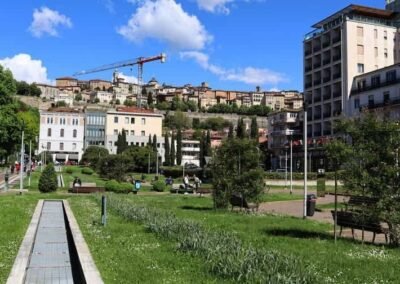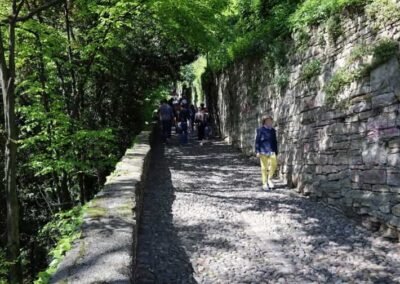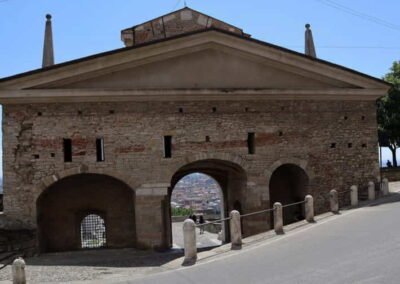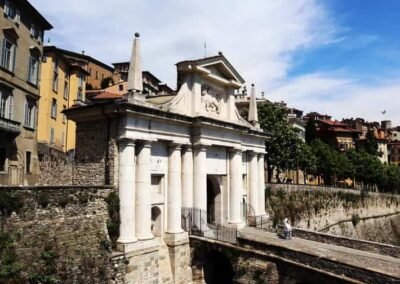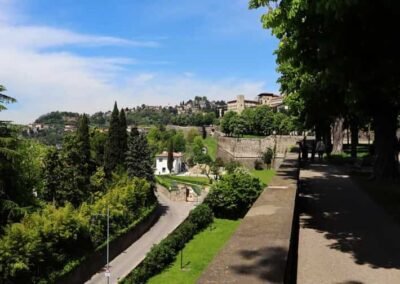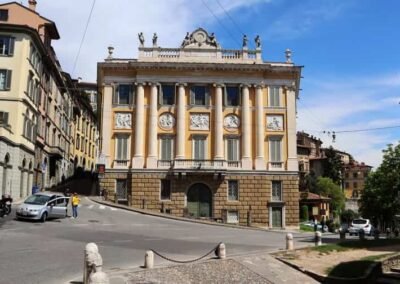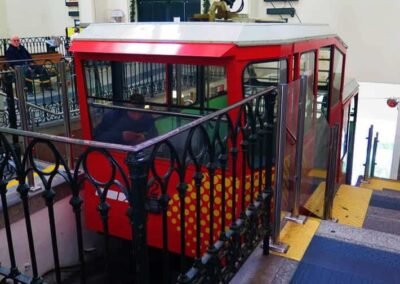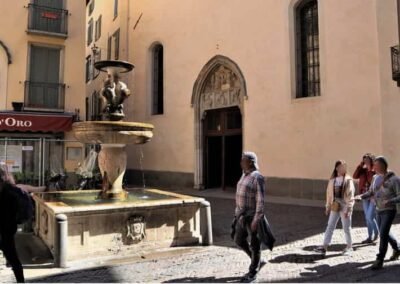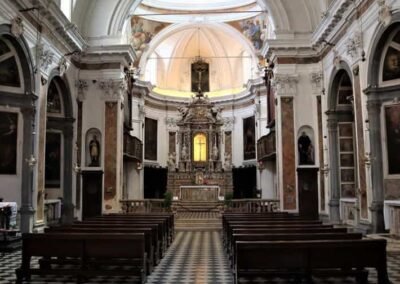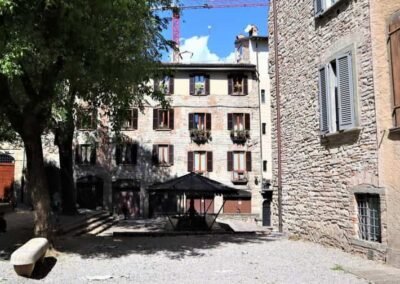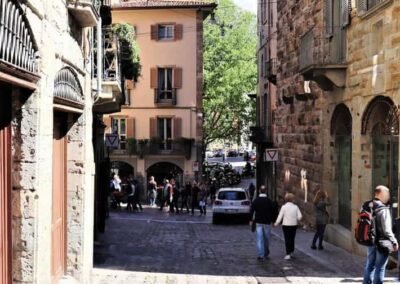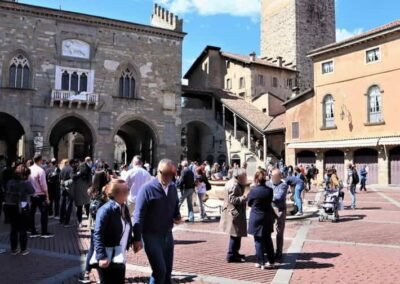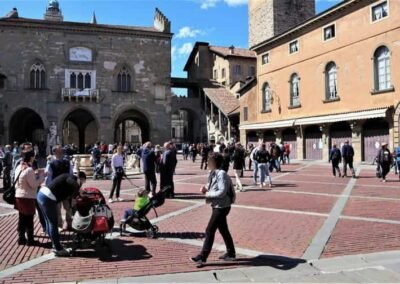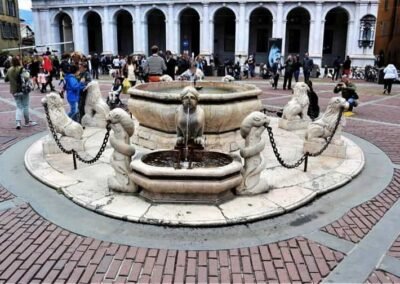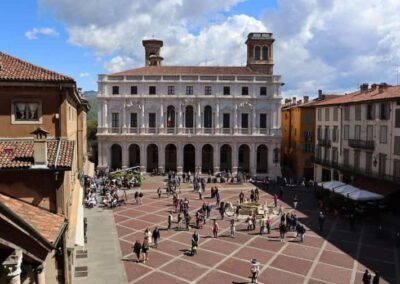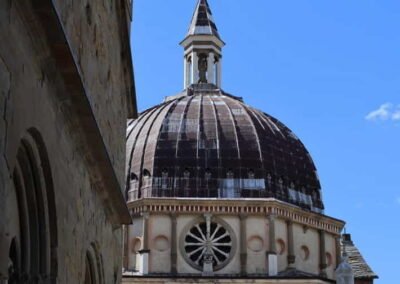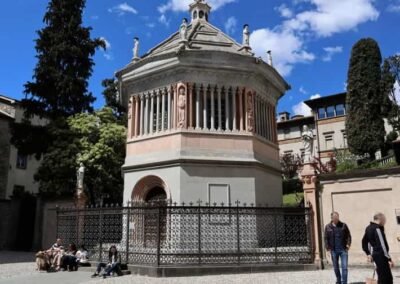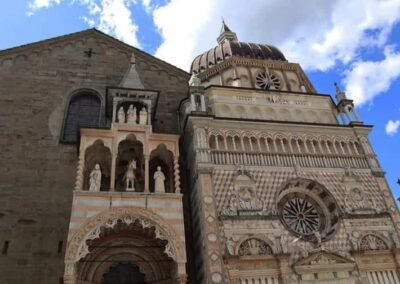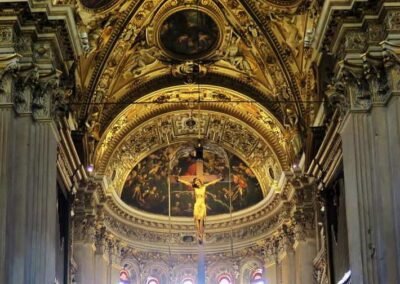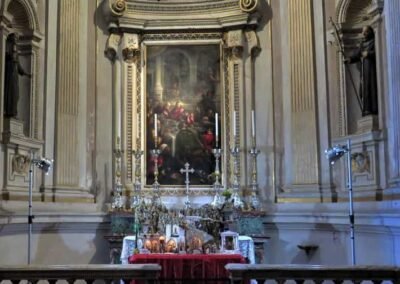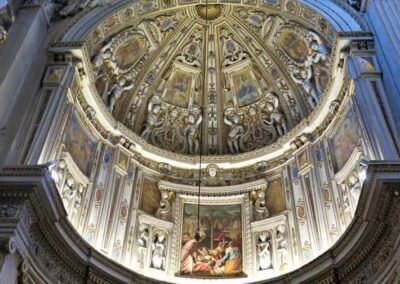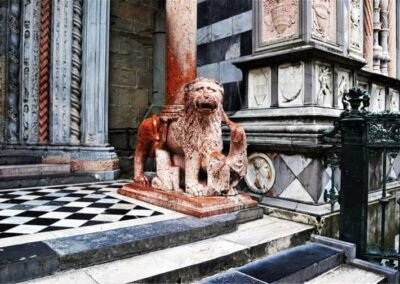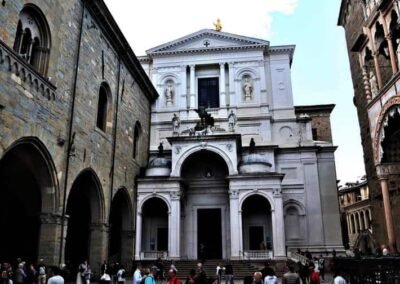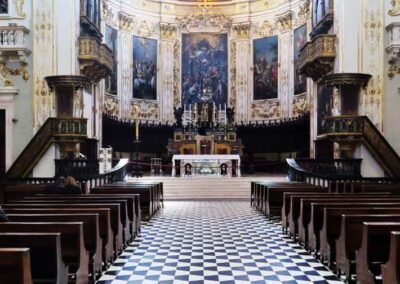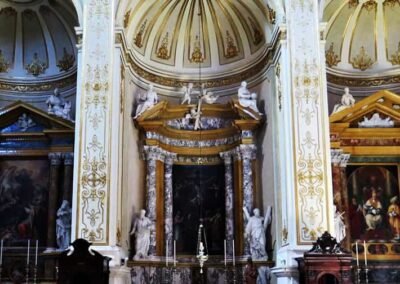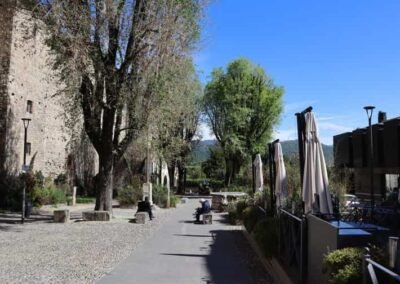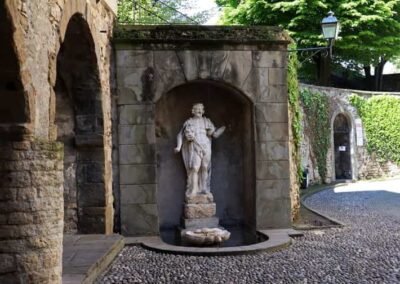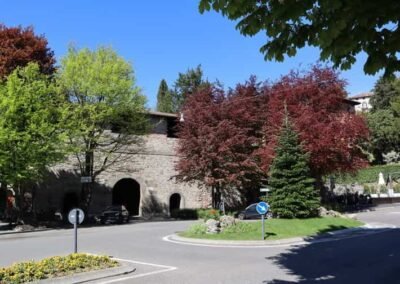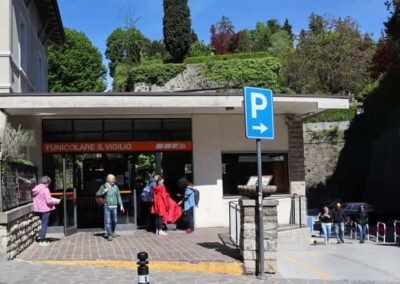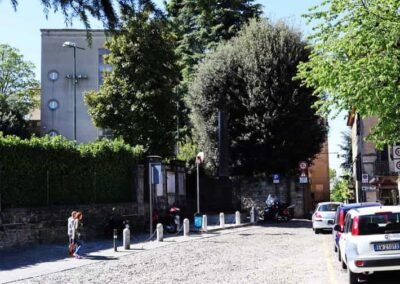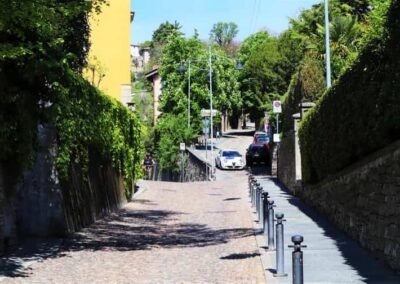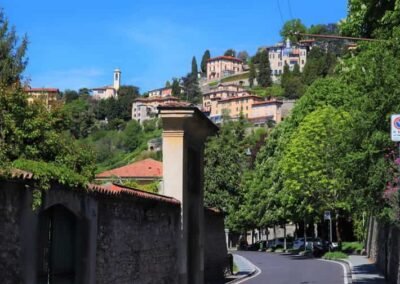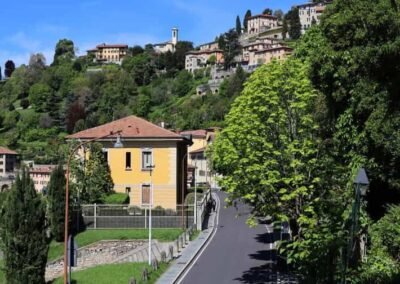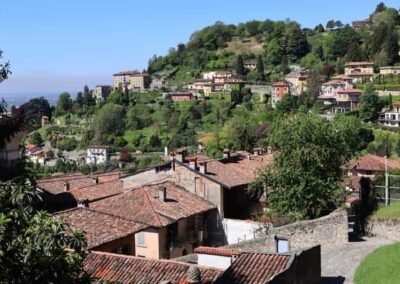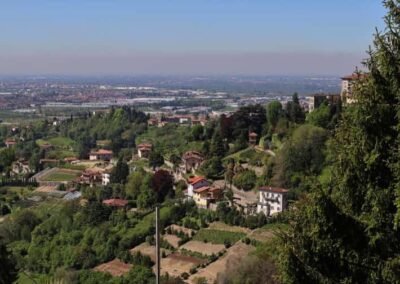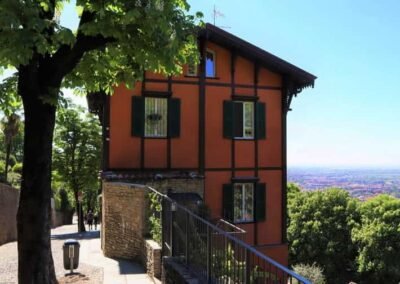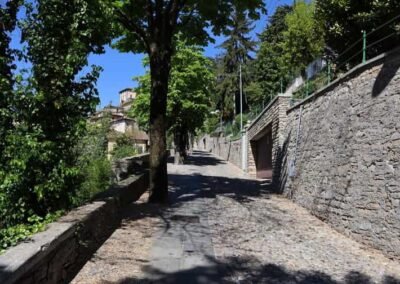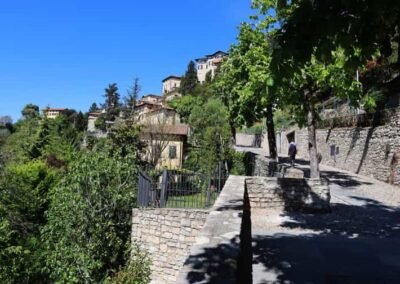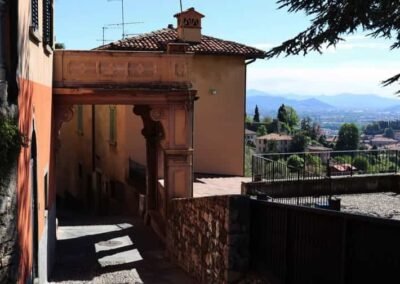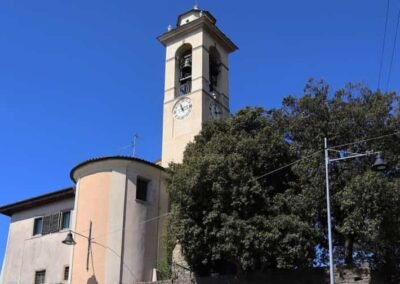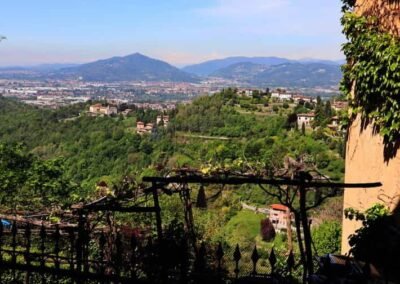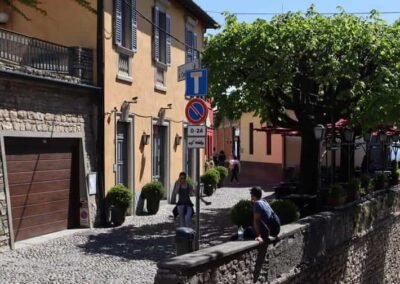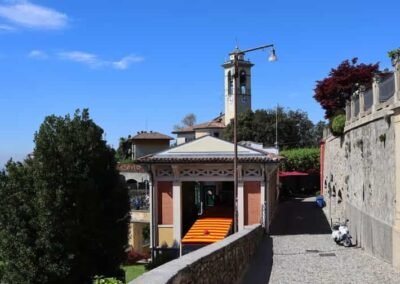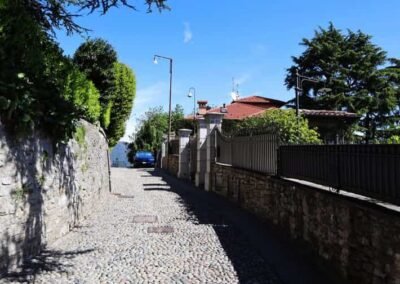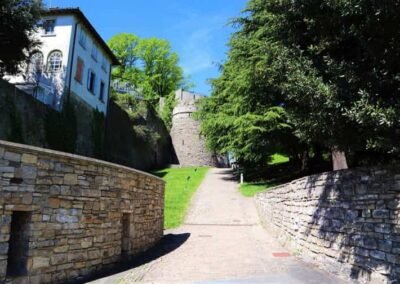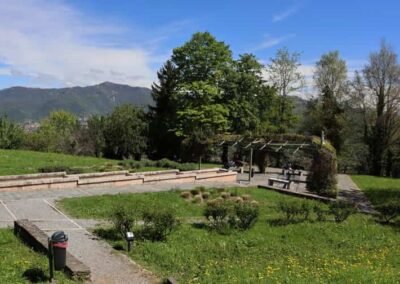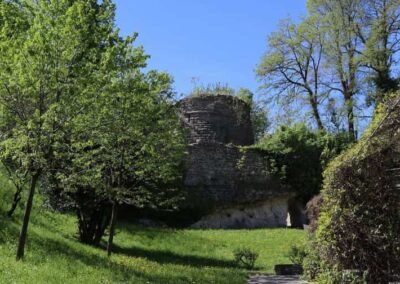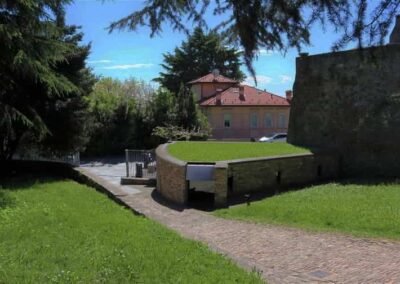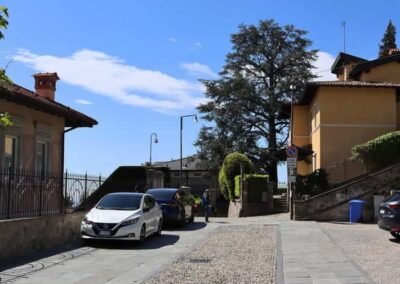HOME
THE REGIONS OF ITALY
PLACES IN ITALY
Italy in Photos
Largo Bortolo Belotti, 24121 Bergamo, Italy (April 2019)
Bergamo
Bergamo is one of northern Italy’s most captivating cities, a place where history, art, and natural beauty blend harmoniously. Located in the Lombardy region, about fifty kilometres northeast of Milan, Bergamo sits at the foot of the Alps, offering a stunning backdrop of mountains and rolling hills. The city is divided into two distinct parts: the upper town, or Città Alta, and the lower town, or Città Bassa. These two areas are connected by winding roads and a historic funicular railway, creating a unique contrast between the medieval and the modern.
The Città Alta is the heart of Bergamo’s history and charm. Enclosed by impressive Venetian walls that were built in the sixteenth century and are now a UNESCO World Heritage Site, this part of the city feels like a journey back in time. Its narrow cobbled streets lead to beautiful squares, ancient towers, and elegant churches that reflect centuries of art and architecture. The central Piazza Vecchia, often described as one of the most beautiful squares in Italy, is surrounded by landmarks such as the Palazzo della Ragione and the Torre Civica. Nearby, the Basilica of Santa Maria Maggiore and the Colleoni Chapel stand as masterpieces of Lombard Renaissance design, filled with intricate details and vibrant frescoes.
By contrast, the Città Bassa is lively and contemporary. It is home to elegant boulevards, shops, restaurants, and cultural venues that reflect Bergamo’s dynamic modern life. Despite its urban energy, it maintains a relaxed atmosphere and strong connection to tradition. The city is also renowned for its musical heritage; it was the birthplace of Gaetano Donizetti, one of Italy’s most celebrated opera composers, and his legacy is still honoured through concerts and festivals.
Surrounding Bergamo are scenic landscapes perfect for exploring. The nearby valleys and mountain trails attract hikers and cyclists, while the region’s vineyards and rustic villages offer authentic experiences of Lombard countryside life. The local cuisine is another highlight, characterized by hearty dishes such as casoncelli (stuffed pasta), polenta, and fine cheeses from the Bergamo Alps. These traditional flavours, paired with local wines, give visitors a true taste of the region’s culture. Bergamo is not only a city of great beauty but also of deep character. It combines the grace of the past with the vitality of the present, offering visitors a rare glimpse into the soul of northern Italy.
Worth a Visit
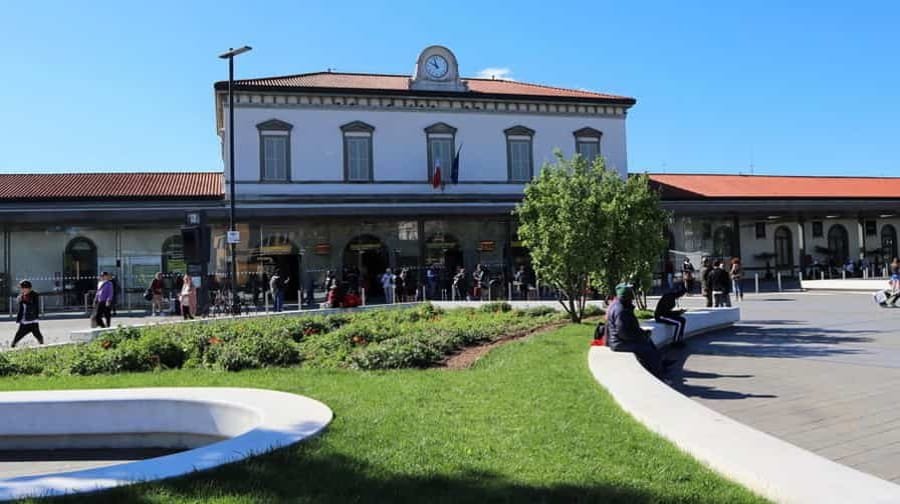
Piazzale Guglielmo Marconi is one of the central landmarks of Bergamo, serving as a vibrant gateway between the city’s historic and modern areas. Located near the main train station in the lower town, or *Città Bassa*, the square is named after the famous Italian inventor Guglielmo Marconi, a pioneer of radio communication. The piazza is surrounded by elegant buildings, cafés, and shops, creating a lively atmosphere that reflects the daily rhythm of urban life. It is also a major transportation hub, connecting visitors to the funicular that ascends to the *Città Alta*, as well as to buses and taxis that link to other parts of Bergamo. The square’s spacious layout and tree-lined surroundings make it both functional and inviting, offering a pleasant place to pause, meet, or simply watch the movement of the city. Piazzale Guglielmo Marconi beautifully represents Bergamo’s blend of tradition and modernity.
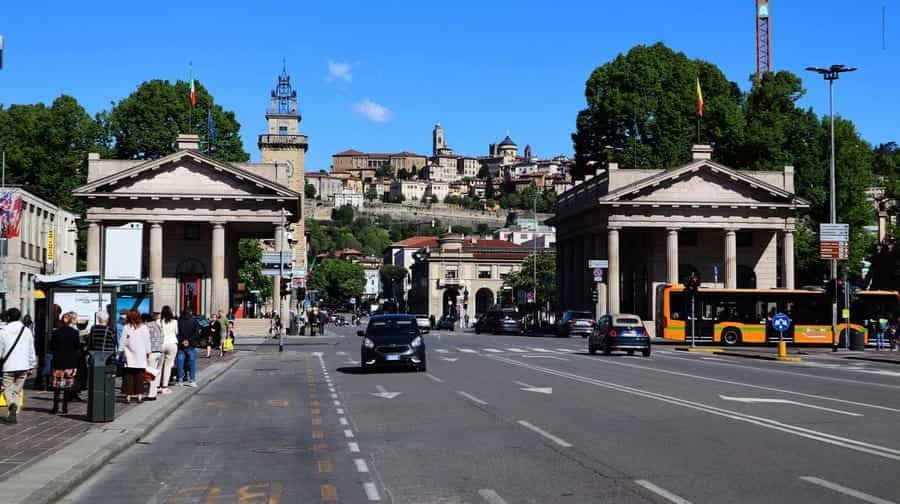
Nestled in Bergamo’s modern Città Bassa, Viale Papa Giovanni XXIII serves as a grand boulevard and a dynamic bridge between the city’s historic visage and its contemporary rhythm. Stretching from Porta Nuova near the railway station toward the heart of the city, this wide, tree-lined avenue unfolds as both a visual gateway and a central artery for everyday life. Historically known as Via Ferdinandea, the avenue emerged in the mid-19th century under Austrian rule to connect the newly built Bergamo railway station with the scenic upper town. Its creation necessitated the demolition of the old Santa Maria delle Grazie church and convent before being renamed in honour of Pope John XXIII, a beloved native of Bergamo
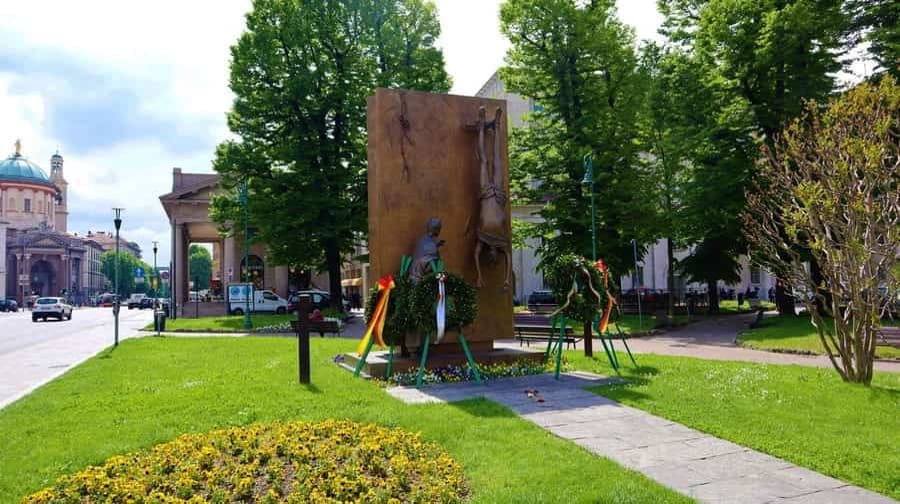
Located in Bergamo’s modern Città Bassa, Piazza Giacomo Matteotti serves as a pivotal public square, melding civic pride, architectural grandeur, monuments, and vibrant greenery into one cohesive space. At its heart stands the distinguished Monument to Vittorio Emanuele II, symbolising Italy’s unification, and nearby is the poignant Monument to the Brothers Calvi, commemorating Alpini soldiers lost during and after World War I Yet the square’s most striking artistic feature is the Monument to the Partisan by celebrated sculptor Giacomo Manzù, a powerful bronze panel evocatively depicting the tragic sacrifices of anti-fascist partisans during WWII. Surrounding the piazza are several architecturally significant structures. One prominent building, originally erected in 1857 as a military command under architect Francesco Valsecchi, later transformed into Palais Frizzoni, the city hall, following modifications by Giovanni Muzio in mid-20th century
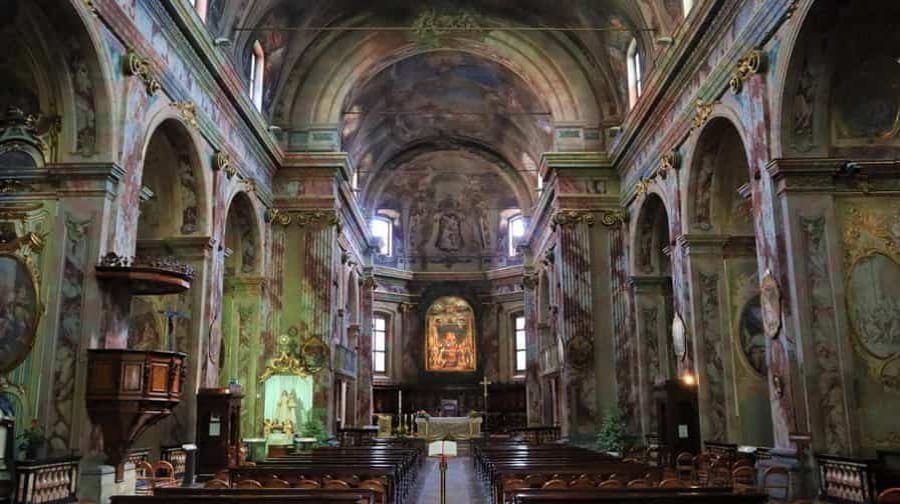
Situated in Bergamo’s Lower Town on Via Sant’Alessandro, the Basilica di Sant’Alessandro in Colonna stands as both spiritual shrine and architectural jewel, built on the very site where, according to tradition, the city’s patron saint was martyred in the early 4th century. The basilica serves as a profound symbol of Bergamo’s Christian heritage and civic identity. Historical records trace the church’s roots to at least 1133, when it was referred to as “Ecclesia S. Alexandri quae dicitur in columna“, in reference to a Roman column said to mark the location of the martyrdom. The current structure originates from a 1447 reconstruction following a collapse, before undergoing substantial Baroque-style renovations in the early 18th century under architect Marco Alessandri. It was ultimately declared a basilica in 1997.
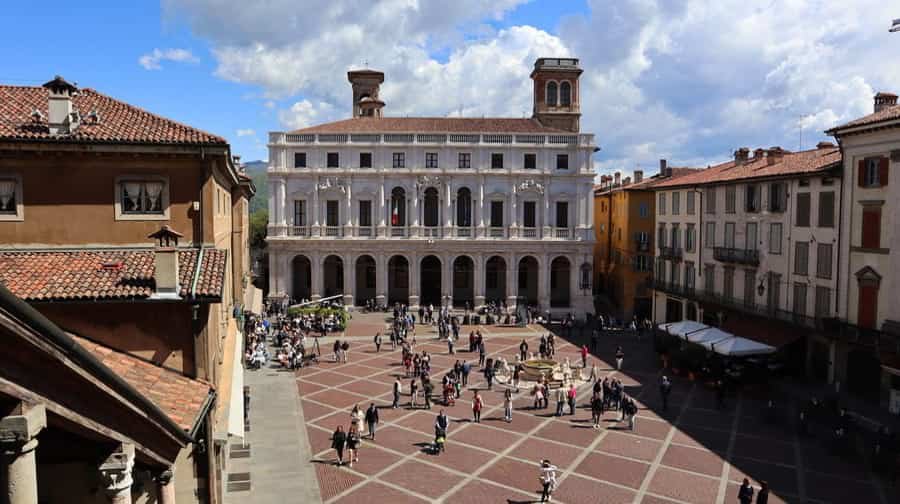
Piazza Vecchia is the historic and architectural heart of Città Alta, Bergamo’s elegant upper town, a space where time seems suspended, and every stone echoes centuries of civic pride and cultural sophistication. Described by Le Corbusier as a “perfect work of art in every stone,” this compact, near-rectangular piazza is framed by some of the most iconic buildings in Lombardy. Set on the site of Bergamo’s ancient Roman forum, Piazza Vecchia evolved through medieval and Renaissance eras into the city’s political and commercial nucleus. The 12th-century Palazzo della Ragione, with its triple-arched portico and monumental loggia, once served as the seat of justice and governance and still dominates the southern edge of the square. Adjacent to it is the Torre del Campanone, the civic tower that tolls 100 bells at 10 p.m., recalling the old curfew and offering panoramic views of the historic centre.
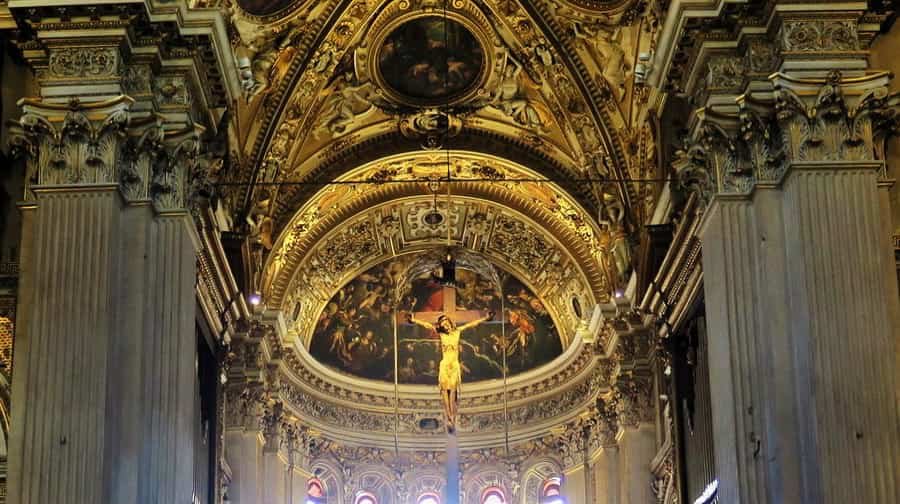
The Basilica of Santa Maria Maggiore in Bergamo’s Città Alta is a masterpiece of religious architecture, revered not only as a place of worship but also as one of Lombardy’s most opulent artistic treasures. Founded in 1137 as a votive offering after a devastating plague, believed to have been spared from the contagion through divine protection, the basilica was built on the site of both an 8th-century Christian church and a Roman temple dedicated to the goddess Clemence (“Mercy”). From the exterior, the basilica retains its austere Romanesque character: thick stone walls, round-arched windows, and a façade entirely without a main entrance, once merged with the Bishop’s Palace.
Photo Gallery of Walk 1 in Bergamo – Via Pietro Paleocapa to Via Gennaro Sora
Approximately 1.39 km – 0.86 miles
The walk starts in – Via Pietro Paleocapa – Viale Papa Giovanni XXIII – Piazzale Guglielmo Marconi – Viale Papa Giovanni XXII – Chiesa Prepositurale di Santa Maria Immacolata delle Grazie, Viale Papa Giovanni XXIII – Largo Gianandrea Gavazzeni – Largo Bortolo Belotti – Chiesa dei Santi Bartolomeo e Stefano – Via Gennaro Sora
Photo Gallery of Walk 2 in Bergamo – Largo Bortolo Belotti to Viale Vittorio Emanuele II
Approximately 2.24 km – 1.39 miles
The walk starts in Largo Bortolo Belotti – Via Monte Grappa – Piazza Dante Alighieri – Piazza Giacomo Matteotti – Via XX Settembre – Chiesa di San Leonardo, Largo Nicolò Rezzara – Largo Nicolò Rezzara – Piazza Pontida – Via Sant’Alessandro – Basilica di Sant’Alessandro in Colonna, Via Sant’Alessandro – Via Giuseppe Garibaldi – Via Francesco Cucch – Via Vittore Tasca –Viale Roma – Via Zelasco Giovanni e Rodolfo – Via Antonio Locatelli – Piazzetta S. Marco – Piazza della Libertà – Via Francesco Petrarca – Viale Vittorio Emanuele II
Photo Gallery of Walk 3 in Bergamo – Via Salita della Scaletta to Cattedrale di Bergamo, Piazza Duomo
Approximately 1.39 km – 0.86 miles
The walk starts in Via Salita della Scaletta – Via Sant’Alessandro – Porta San Giacomo – Viale delle Mura – Via S. Giacomo – Piazza Mercato delle Scarpe – Funicolare Città Bassa, Piazza Mercato delle Scarpe – Via Gombito – Fontana Del Gombito – Chiesa di San Pancrazio, Via S. Pancrazio – Via Gombito -Via Mario Lupo – Via Gombito – Piazza Vecchia – Piazza Duomo – Basilica of Santa Maria Maggiore – Cattedrale di Bergamo, Piazza Duomo
Photo Gallery of Walk 4 in Bergamo – Piazza Mascheroni Lorenzo to Castello di San Vigilio
Approximately 1.27 km – 0.80 miles
The walk starts in Piazza Mascheroni Lorenzo – Piazza della Cittadella – Via Costantino Beltrami – Largo di Porta S. Alessandro – Via Sudorno – Via S. Vigilio – Via al Castello – Castello di San Vigilio, Colle San Vigilio, Via al Castello
COPYRIGHT © 2018-2025 ITALY IN PHOTOS - ALL RIGHTS RESERVED
